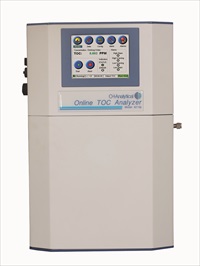Members Login

Channels
Special Offers & Promotions
Product for drinking water process application
Xylem’s OI Analytical 9210p On-line TOC Analyzer for real time monitoring and regulatory compliance reporting in drinking water
 Xylem’s OI Analytical brand is pleased to highlight the 9210p On-line TOC (Total Organic Carbon) Analyzer for routine monitoring and regulatory compliance reporting in drinking water. The 9210p provides real time data and visibility of natural organic matter that reacts to form harmful disinfection by-products. All public water systems must comply with U.S. EPA regulations by October 1, 2013.
Xylem’s OI Analytical brand is pleased to highlight the 9210p On-line TOC (Total Organic Carbon) Analyzer for routine monitoring and regulatory compliance reporting in drinking water. The 9210p provides real time data and visibility of natural organic matter that reacts to form harmful disinfection by-products. All public water systems must comply with U.S. EPA regulations by October 1, 2013.
Raw source water is progressively treated in chemical coagulation, flocculation, sedimentation, and filtration steps to remove natural organic matter (NOM) during the drinking water treatment process. Humic acid and fulvic acids contained in the residual NOM of water undergoing disinfection by chlorination react with chlorine to form disinfection by-products such as trihalomethanes (THMs) and haloacetic acids (HAAs), which have been linked to cancer.
The U.S. EPA has issued two rules regulating levels of disinfectants and disinfection by-products in drinking water. The Stage 1 Disinfectants and Disinfection Byproducts Rule (D/DBPR) took effect in 2002 lowering the permissible levels of THMs to 80 mg/L and regulated levels for five HAAs, bromate and chlorite in drinking water for the first time. The Stage 2 D/DBPR was promulgated in 2006. Compliance dates for the Stage 2 D/DBPR are phased in over time based upon the number of people served by the water system. All public water systems must be in compliance by October 1, 2013.
Total organic carbon (TOC) analysis is an indicator of NOM and THM levels in source water and finished drinking water. Test methods for regulatory compliance reporting are currently based upon laboratory TOC analysis of grab samples. Two USEPA-approved methods for regulatory compliance reporting (415.3 and SM 5310C) employ the heated sodium persulfate oxidation technique.
Grab sampling and laboratory analysis is suitable for conducting the periodic testing needed to comply with monthly D/DBPR reporting requirements. This approach is not suitable for monitoring and controlling NOM levels in the drinking water treatment process.
On-line TOC monitoring can provide plant operators a dynamic, real-time view of NOM levels in water to adjust and control the coagulation, flocculation, and disinfection steps to minimize formation of disinfection by-products. Data from an on-line TOC analyzer may also be used for D/DBPR compliance reporting provided the analyses are performed in accordance with the sample oxidation, detection, calibration, and QC verification criteria in U.S. EPA approved methods 415.3 or SM 5310C.
A comparative study of laboratory and on-line TOC analyzers was undertaken to determine if on-line analysis obtains results comparable to grab sampling and lab analysis. In this study raw source water, finished drinking water, and quality control standards were tested using the OI Analytical Aurora 1030W laboratory TOC analyzer and 9210p on-line TOC analyzer. Both instruments employ the heated sodium persulfate oxidation technique in USEPA-approved methods 415.3 and SM 5310C.
An analyst calibrated both instruments using the same calibration solutions on the same day. Six surface water samples with unknown TOC concentrations were analyzed on each instrument. One of the samples was chosen at random as a duplicate to make a set of seven samples each of which was analyzed in triplicate. Results of the analyses conducted on each instrument were correlated and shown to be statistically the same (a correlation factor of 0.99747). Complete details of the study are presented in an application note.
Results of this study indicate that the 9210p on-line TOC analyzer obtains data that is comparable and consistent with grab samples analyzed on a laboratory TOC analyzer. The 9210p on-line TOC analyzer allows use of a 5-point calibration making it fully compliant with USEPA-approved methods 415.3 and SM 5310C. The 9210p on-line TOC analyzer is capable of providing continuous real-time TOC data that can be used for routine monitoring of TOC removal and DBP reduction and regulatory compliance reporting.
Media Partners


